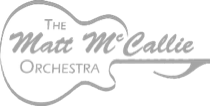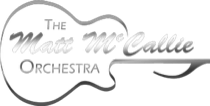Explaining The Written Drumset:
Drumset notation is the least consistently written music in big band charts and other styles. One reason this has carried on for so many decades is that much of drum notation is written in slash notation. In such cases the music only provides a description of the style and a brief rhythmic example of the groove. Much is left to interpretation. This requires a drummer to have experience and knowledge of the music they are performing.
Because so much is often left to interpretation it is less common to find a drummer who can read music written for their instrument as well as a pianist, clarinet, viola, or english horn player as a few examples.
Notation Advantages:
The greatest advantage to writing fully notated drum parts is that any educated drummer can read the music accurately with little preparation. Almost every band at some point needs to hire a substitute to sit in with their band. While every musician likely has their own unique sounding drumset and manner of playing, having consistency in what is being played can make or break a performance.
Another advantage of properly notated drum notation for modern composers and arrangers is that if using a digital notation software, the drum part can be reviewed with perfect accuracy during every playback in the writing process. There is no mystery about how differently the drummer might interpret the music. Also, when composing drum parts digitally the file can be exported in a digital medium such as XML or MIDI and played back in another notation software or a recording program such as Pro Tools or Logic that can enhance the sound of the notation using virtual instruments.
What follows is a brief crash course in understanding drum notation and the purpose of the notation for various tones and tools most drummers regularly use.
The Staff:
Drummers read a traditional five line staff just like most orchestral instruments. Unlike most pitched melodic and chordal instruments using treble, alto, tenor, and bass clefs drummers use a percussion clef. There are multiple options for what the clef can look like but either two vertical lines or a box shape are most common.
Notation:
Each line and space in, above, and below the staff indicates a different drum. Drums placed at the top line of the staff and higher are for cymbals such as ride, hi-hat, crashes, and china cymbals. Those drums are also designated with different notehead shapes. Quartet notes and faster rhythms usually use an X shaped notehead. For half notes and longer hollow note heads are used.
Striking Tools:
Most drummers always carry a variety of sticks, mallets, rods, and brushes. Each has a unique sound and can greatly influence the feel of a song they accompany. In some cases a drummer may combine something different in each hand for greater versatility.
Drum sticks come in different materials and weights, each resulting in a different response from the drums. Brushes are similar coming in various gauges and materials. Steel and nylon wire brushes often have a telescoping handle that can also adjust how the shape and rigidity of the brushes as a whole so when played the drums will sound light and wispy or heavier and more solid.
Mallets can make a drumset have a more orchestral sound and are especially effective on cymbal rolls. They can also make toms sound more like timpani. Since the handle of a mallet is usually wooden a drummer can also turn them around so the wooden end strikes the drums more like a traditional set of sticks.
Also popular in a drummer's arsenal are rods. These also come in varying thicknesses of the material, as well as varying overall diameters resulting different sounds, similarly to how brushes can be adjusted. For example larger diameter, heavier assemblies are often referred to as hot rods and lighter weight, smaller diameter rods are called cool rods. Rods are popular in settings where a strong rock beat is needed without overwhelming quieter acoustic instruments and vocalists while on stage. Country music is a popular setting as can be seen by drummers who play for artists like Taylor Swift. MTV Unplugged concerts often had drummers playing the same way they usually played their rock music but with rods to better blend with the acoustic instruments.
Also in the above example are instructions for the drummer. Next to the style indication R&B is also written R.B., which is an abbreviation for ride bell. R.C. would stand for ride cymbal. At rehearsal mark letter A is another instruction for the drummer to switch from ride bell to H.H., which stands for hi-hat. These instructions are common to help drummers read the small notation. They are not technically necessary because the shapes of the note heads indicate how the drums are to be played on each line or space in, above, and below the staff.
Ride Cymbal:
Most drummers use just one ride cymbal per gig. Ride bell is in the shape of a diamond where as ride cymbal would be shaped as an X.
Many drummers, especially jazz musicians, often modify their ride cymbals. A drastic modification is to drill holes around the circumference of the cymbal and install metal rivets in those holes. With this modification the rivets continue to bounce and jingle for a longer duration after the cymbal has been struck. This trick when done well is both subtle to a non-discerning listener, but substantial in its effect.
A non-permanent modification many drummers do is to hang a chain from the top center of the cymbal's stand so that it lays upon the surface from the center toward the edge. A chain with small beads and length of only a few inches will add a very noticeable effect. The sound of this modification is much more harsh than the addition of rivets but can be quickly and easily removed and costs very little.
Crash Cymbal:
Most drummers setup only one crash cymbal for each gig but it is not uncommon to see two. When using two crash cymbals one usually has a bright timbre and the other one sounds dark. In rock music it is common to play both simultaneously, one per stick in each hand. Striking two differently toned or pitched cymbals at once is both louder and thicker and heavier in its sound. Some drummers use even more cymbals but large setups take up a lot of stage space and more time to setup and teardown, which most drummers playing our regularly prefer to avoid.
China Cymbal:
While heard fairly often in recordings few drummers setup a China cymbal on their gigs. Its shape is smaller than other cymbals and its sound is very distinctive with a higher pitched, thinner tone. The China cymbal's distinct tone can cut through the mix of the rest of the instruments so it is played less often, reserved for when its uniqueness is musically purposed.
Hi-Hat:
An X shape for the hi-hi indicates the drummer's foot is keeping the upper and lower hi-hat cymbals together, referred to as closed. An O shaped notehead would indicate an open hi-hat where the drummer releases the hi-hat pedal. A partially open hi-hat is an O with a + sign in the middle.
Hi-hat can also be played without being struck using just the foot pedal. In this case the notation is moved to the space immediately below the staff.
Snare:
Kick & Bass Drums:
Even drummers often miscommunicate kick and bass drums, and the same error in distinction is often found in written drum notation. A kick drum is the largest drum in a traditional kit. It is the only drum that placed on the floor sideways so that the head is facing the audience. It is placed in the center of the kit and operated by a floor pedal, similar to the hi-hat, with a mallet that swings and makes sound by striking the kick drum.
A bass drum is more commonly found in orchestral and marching band settings. A bass drum is much larger than a kick drum and usually mounted on a stand raised off the ground, or carried in front of a drummer with straps. A bass drum is struck on both sides instead of just one like the drums of a drumset.
It is much easier to play a drum roll using a mallet in each hand on a bass drum than it is on a kick drum with a single pedal. Some drummers, like in the Dave Matthews Band use a second kick drum pedal, usually on the floor to the left of the hi-hat pedal to enable more rapidly repeated strikes. Some drummers may also use a second kick drum for different effects.
Kick drums come in different sizes, typically for the styles of music, bands, and venues they will use their kit. For softer acoustic shows and jazz an 18" kick drum is most common. Rock bands tend to use larger kick drums where a 22" is more common. Drummers with an overpowering kick drum often stuff the drum with blankets to absorb and dampen the sound.
Auxiliary Percussion:
Auxiliary percussion parts can be written independently of a drumset. Instruments such as cowbell, shaker, triangle, and tambourine that have only one pitch are usually written on a single line staff using a percussion clef. While such instruments have only a single pitch articulations such as muting, accents, and dynamics can all be implemented without other staves or spaces.
Many auxiliary percussion instruments can be mounted to a drumset and played by the drummer. Tambourines and cowbells typically mount to the top end of a hi-hat or other cymbal stand. They can also use clamps and mounts that attach them to other drums or a rack if the drummer uses one.
Since every line and space of a drumset staff is already designated to its snare, toms, kick, and cymbals there is no different location available to notate auxiliary percussion. To indicate the use of auxiliary percussion different shaped note heads are employed. Most common for cowbell and tambourine are solid triangle shaped note heads. The flag of the note indicates duration similarly to most traditional notation.
Add part about how traditional notehead shapes are used in individual parts but different shapes are used for drumset.







